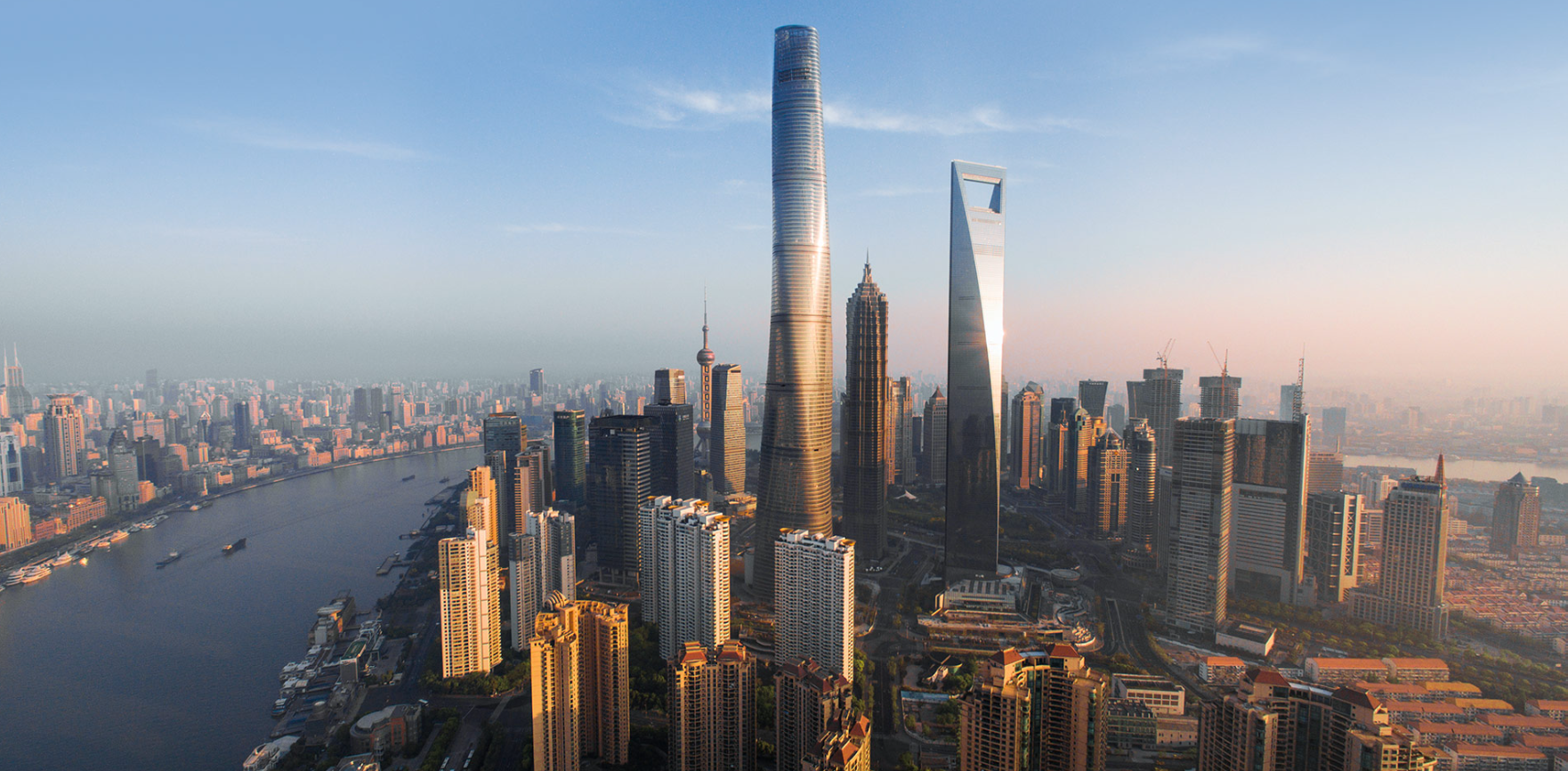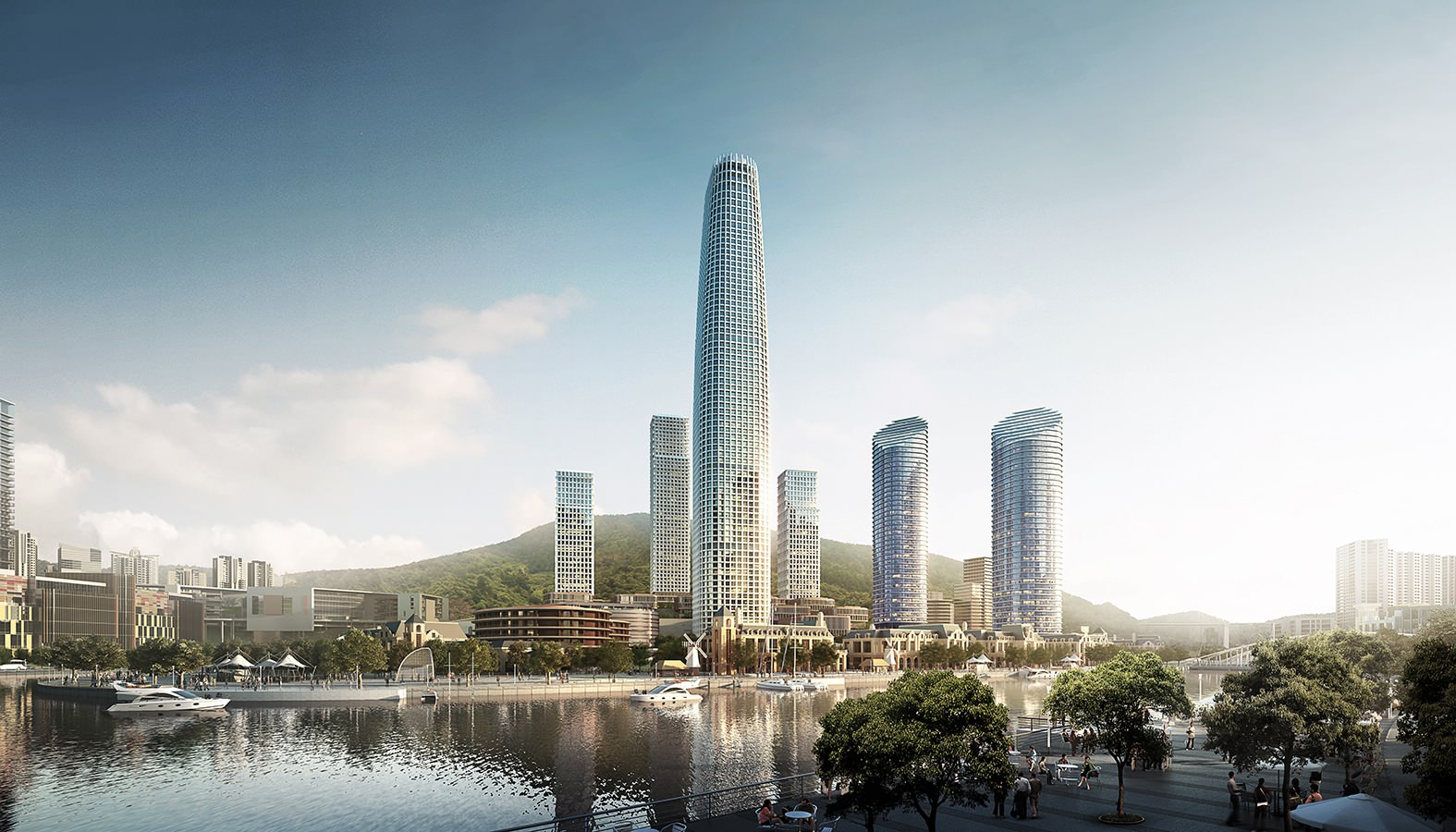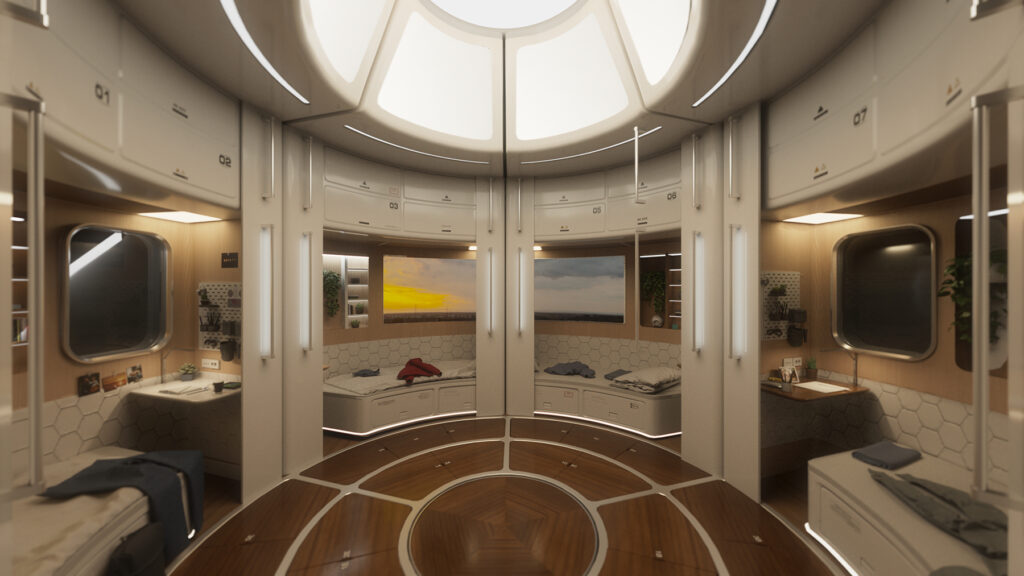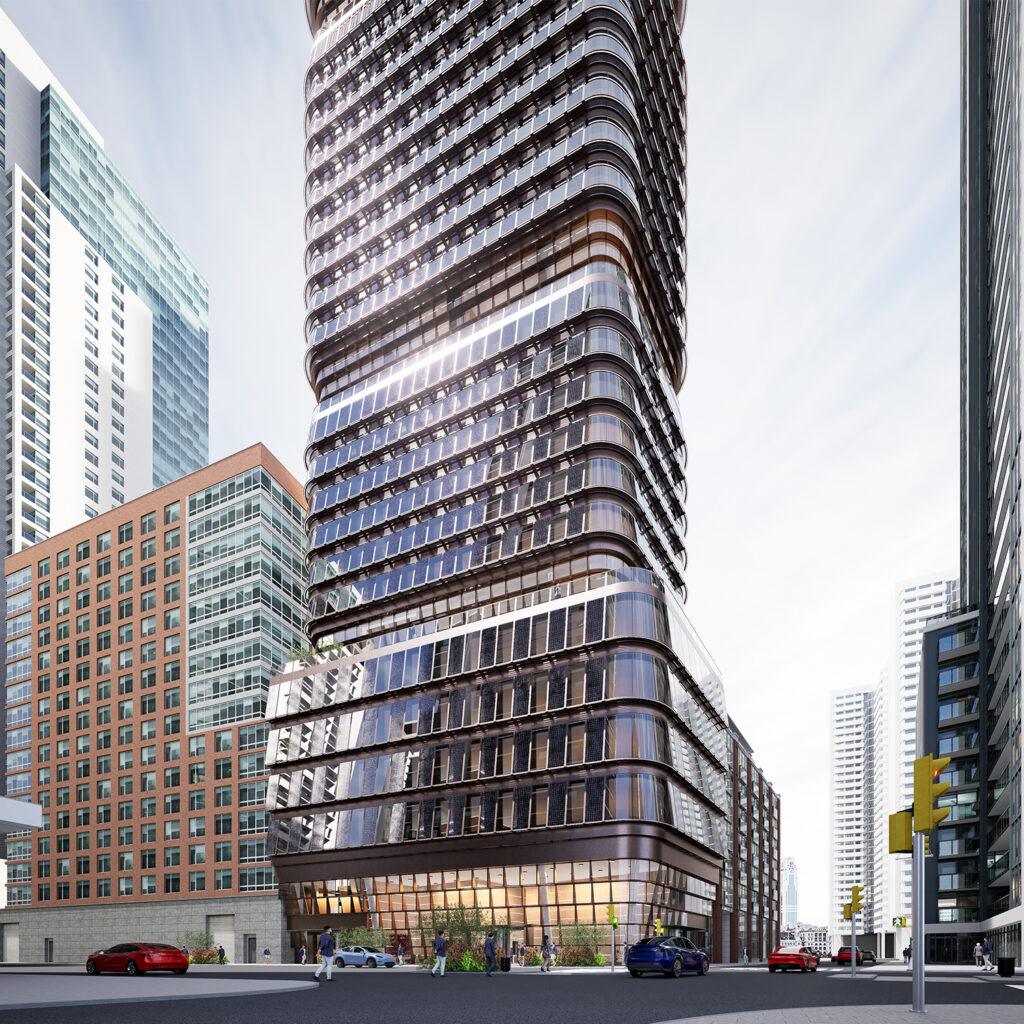What is driving the future paradigm of tall structures? The tallest building in the world, the Burj Khalifa at 828 meters (2,717 ft) in height is one of the greatest design and engineering accomplishments in the history of tall structures. In the classification of tall buildings, it is considered a mega tall as a structure that surpasses 600 meters (1,969 ft) in height. It is a revolutionary work of architecture with the application of high strength reinforced concrete and a structural system unlike any other building in the world. The overall “Y” shaped structural configuration consists of a hexagonal buttress core with three wings radiating outward at 120 degrees in each direction. The concrete core together with the three wings work together as a buttress system to resist torsion from lateral forces both wind and seismic. Each of the wings includes two reinforced concrete walls with a heavy hammerhead wall at each end making it a tall vertical I-beam in principle. As the building gets taller, each tier sets back in a spiral stepping sequence in order to reduce the wind forces and vortices. To achieve its height the crown’s structural system includes a steel truss spire that extends more than 182 meters (600 ft) above the highest concrete structure. The veritable size and form of the Burj Khalifa are a testament to the aspirational heights that mankind has been able to achieve using ingenuity, material systems, and proven engineering technologies.

“Built of reinforced concrete and clad in glass, the tower is composed of sculpted volumes arranged around a central buttressed core. As the tower rises from a flat base, setbacks occur in an upward spiraling pattern, reducing the building’s mass as it reaches skyward.” – SOM
Determining the magnitudes, directions, and distributions of the forces acting on structures of all scales but especially in mega tall buildings like the Burj is paramount in initiating the process of the structural design. It is then the scale and form of the architecture which sets in motion how the engineering evolves as structural systems, materials, configurations, and mass are calibrated to an optimal solution. For example, the mass in the above-ground structure of the Burj alone includes an estimated 450,000 metric tons and is supported by more than 110,000 metric tons of concrete in the steel-reinforced foundations. It is the gravity loads (live loads and dead loads) and lateral loads that drive the overall design and relationships between the differentiated building systems. The dead loads of a mega tall which include the weight of the structure play a critical role in determining the configuration, scale, and distribution of material systems. But it is the lateral loads that are a defining force in calibrating the form, articulation, and scale of a tall building. As a structure becomes taller its lateral forces (wind or seismic) increasingly dictate the design. As wind forces wrap the building it forms vortices, generating movement perpendicular to the direction of the wind, alternating in magnitude as the forces increase or decrease. If these motions were to oscillate the building system at its natural frequency then those vibrations would reach the system’s maximum resonance. The greater the displacements, the higher the stresses across all structural systems, causing damage and potential failure.
As the external loads are applied to the overall structural system, they cause internal forces that transmit throughout the building, affecting all structures. The forces experienced can be grouped into tension, compression, bending, and torsion. Each of these behaviors can be controlled by applying principles and structural configurations that are optimized to respond under each of these conditions. What we see taking place in design today, is that these kinds of associated behaviors to forces can be computationally simulated, allowing designers and engineers to validate with a certain degree of approximation a solution that works. This advanced computational design approach has been proven in various scenarios at different scales especially in tall structures.
Highly articulated systems of varying behavioral qualities like in the Burj Khalifa, Shanghai Tower or Guiyang World Trade Center are most challenging when applied to large scale structures that reach these super tall heights. The super tall as a typology provides a platform for examining the various relationships between digital design and material systems that can only emerge from a highly integrated large-scale construction feat. Building systems and physical forces are increasingly concentrated within a constrained building footprint and this continues to increase as buildings continue to reach for new heights. The Jeddah Tower, in Saudi Arabia, planned to open in 2020, already under construction will soon be the world’s tallest at 1 kilometer (3,280 ft.) in height. As we continue to channel increased complexity into the expression of Architecture and its scale, new methodologies of intelligent design become necessary for achieving super tall structures. This intensity of qualities in structures of large scales necessitates that associations between geometric constructions, analytical analogs, and their physical procedures become more precise and traceable.
Discrete computational techniques allow us to build large quantities of information rapidly and with large-scale projects, those numerical processes can take on computationally intensive requirements. In the age of cloud computing, the necessary bandwidth for running large numerical calculations is less cumbersome and takes less time to run. More importantly, computational methodologies provide us with the means to maintaining building system relationships between geometry, analytical analogs, and the numerous elements derived from each variable change in discrete parametric values. We internalize mathematical and scientific formulas to the extent that relationships between form and discretized elements reveal problematic conditions as to cause and effect functions of the objectives we are optimizing for. Thus, for example in the case of structural design, we establish a direct link between the topology of a building, zones, areas, mass, height, and the elements that serve to host structural systems so that we can calculate and simulate loads, resistance, rigidity and the associated mass of any structural solution. Each solution gives us insight into how each driving parameter affects the overall performance of each objective. If we are optimizing for the flexible functionality of a space and minimizing the structural mass, then the solution space will indicate that projecting the structural system to the perimeter has a dual benefit. In some cases, this solution reaches a limit in which case we can begin to incorporate additional performance parameters to calibrate the solution. These can include geometric transformations, daylighting, core dimensions, floor systems, structural systems, etc. Introducing as many variables into the computational methodology is imperative for producing an integrated solution to a large-scale construction challenge.

The capabilities of simulation and computational platforms are no longer tools for the validation of a disconnected design process but now more than ever tools for thinking. While some analytical analogs might serve to give form to an idea others are there to calibrate it. In the case of the 632 meters (2,073 ft.) tall Shanghai Tower, the character of the building is an expression driven by the idea that geometry and torsion, like a blade, can mitigate the effects of wind loads and vortices on a skyscraper. The shaping of the tower is driven by non-linear shape transformations, tapering with a rounded sectional profile that rotates 120 degrees from bottom to top. The form, scale, and discrete geometric systems can only be calibrated using associative logic and parametric techniques. The validation of the building’s performance, in this case, was routinely tested until a refined wind load reduction of 24% was achieved. As an example of using forces to shape a building, the concept is clear, but the method is what enables the construction of this idea at the scale of a supertall.
The established paradigm of information exchange between Architecture and Engineering is predominantly characterized by the translation and rebuilding of information between distinct modeling environments. This migration of data and separation of agency results in the loss of digital intelligence and the association between design elements and their analytical properties. This is a challenge for integrated design, and it becomes more necessary to blur the boundaries between disciplines through computational design, which is one of the greatest strengths that Architecture and Engineering firms like SOM embody.
The larger and more complex buildings get, the more challenging it becomes to generate precise analytical models that characterize the structural behaviors. In order to describe the performance of any given structural idea, we must apply computationally intensive techniques in a way that engages the design process in parallel. The application of the finite element method (FEA) is especially important when attempting to build non-conventional forms from well-understood materials. Finite element discretization of geometric domains with complex geometric relationships is integral to proving that a solution can be tailored to a specific design condition. The mechanics of structural forces should be embedded in the expression and performance of Architecture. FEA makes use of a series of internalized equations in analytical platforms. These include equations such as Naiver-Strokes, Euler-Bernoulli Beam, Partial Differential, and the heat equation. Applying the principles behind each of these to make informed decisions about the physical behavior of our designs brings us closer to intelligently maximizing the potential in material systems.

The Guiyang World Trade Center serves as another example of the capacity for solving the challenge of scale using computational design techniques. This building reaches a height of more than 380 meters with 79 stories. This building is characterized by a finely tuned geometry that is derived from non-linear scalar shape transformations to optimize the distribution of load forces, maximize floor plate area, and decrease column spacing in response to programmatic requirements. The expressed perimeter reinforced-moment frame is clad in approximately 30,300 panels with a combination of doubly curved, singly curved, and planar types. The doubly-curved panels, in this case, range in size from 2700×1300 mm to 6200×1300 mm and posed a major challenge for finding a solution to the delivery of information that could allow for ease of construction. It was overcome by using customized parametric tools, that could propagate localized inputs (vectors, datums, and amplitudes) across each discrete element. This is known as skeletal modeling which provides increased performance in processing. First, the form is optimized for structural loads and then, it is used as an input for mapping discrete elements, automating control geometry, and instantiating system-level features. These are elements in the building such as enclosure systems which are constrained by performance requirements for environmental loads and ease of construction. The result is a detailed digital-analog that captures and described the tower in its entirety.
We will continue to see the advent of even taller structures as technology advances but what is most intriguing are the possibilities that new technologies, especially digital tools, enable in discovering solutions to the greatest challenges of scale. We will only achieve taller structures by enhancing the relationships between geometric continuity and discrete singularities in which form, structure, character, and production processes are highly integrated. The skyscraper is a pivotal building typology for implementing and discovering this continuum. Additionally, these methodologies must go beyond digital to allow for ingenuity to emerge out of the unpredictable. It is a building typology where the interconnectedness of physical forces compete to produce the outward effects of elegance in form and structure.[/vc_column_text][/vc_column][/vc_row]


